by Lisa Cooke | Dec 17, 2014 | 01 What's New, Digital Archives, DNA, History, Inspiration
A new project backed by top British scientists is crowd-sourcing space exploration by offering donors the chance to put their DNA on the moon. Their first Kickstarter 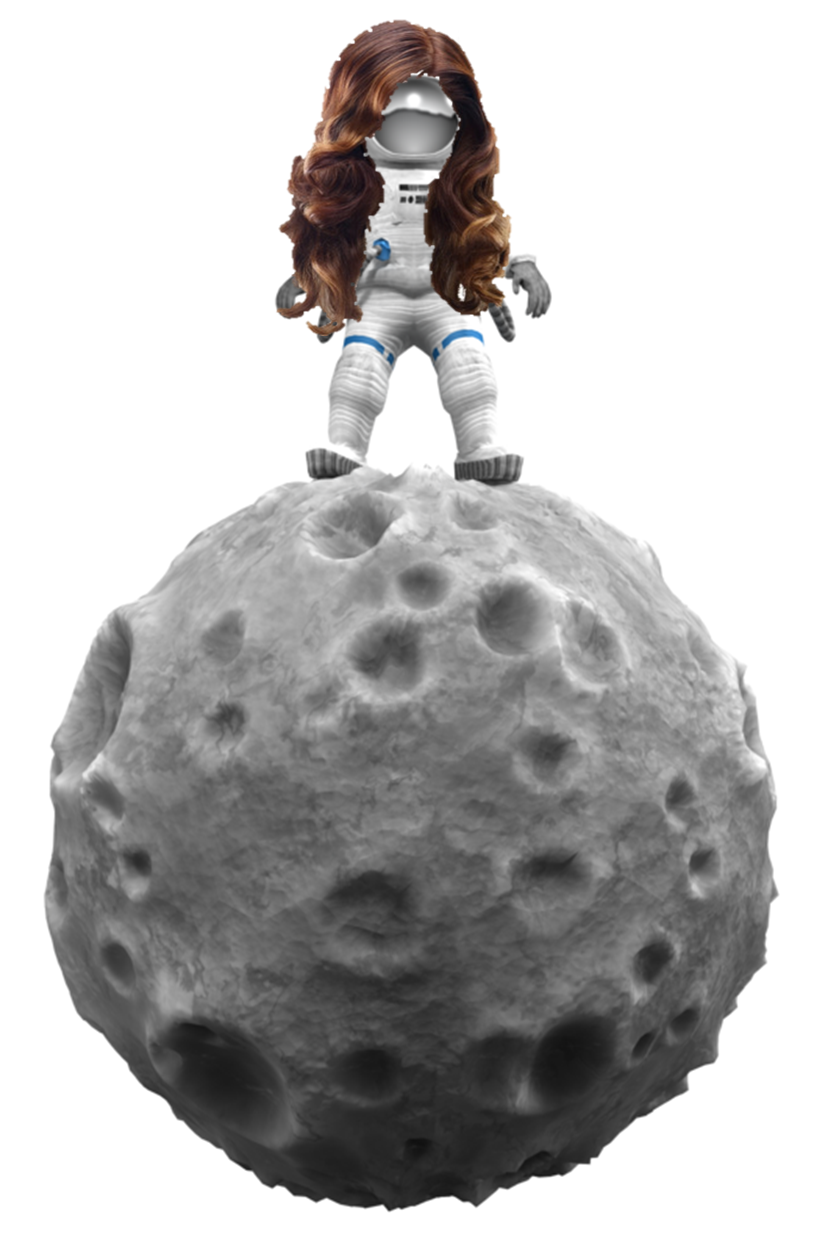 campaign successfully ends today: over £600,000 has been raised in less than a month!
campaign successfully ends today: over £600,000 has been raised in less than a month!
Lunar Mission One hopes to put a research craft on the “South Pole” end of the moon within ten years. The vessel will drill deep into the rock in an effort to learn more about the moon’s origin and history.
Around 6700 individual pledges were made in this first phase of funding. Those who pledged at a certain amount will receive space in a “digital memory box” that will be sent into space with the research craft, a sort of 21st-century time capsule and digital archive on the moon.
“People will be able to upload whatever they want to their memory box – including personal messages, photos, audio and video,” promises the Lunar Mission One website. “There will also be the option to submit a strand of hair for those who wish to store their DNA for inclusion in the time capsule.”
“The price of the digital memory boxes will be determined by capacity – starting from as little as a few dollars. Most digital information-only purchases are expected to be $10+. Customers who want to combine digital information with a strand of hair, will pay $100+. We are also developing prestige packages ($1,000+) and a lottery option from $1.”
What do you think? It’s not too late to join the fun! According to the Lunar Mission One website, “Following the Kickstarter fundraising, and for the next four years, people will still be able to reserve space in the private archive, through an online portal. This could be for themselves or as a gift. Individuals will be able to get involved in other ways, such as through membership of our Supporters Club.” Learn more at the Lunar Mission One website.
by Lisa Cooke | Dec 16, 2014 | 01 What's New, Cemeteries, Humor, Inspiration, Memory Lane
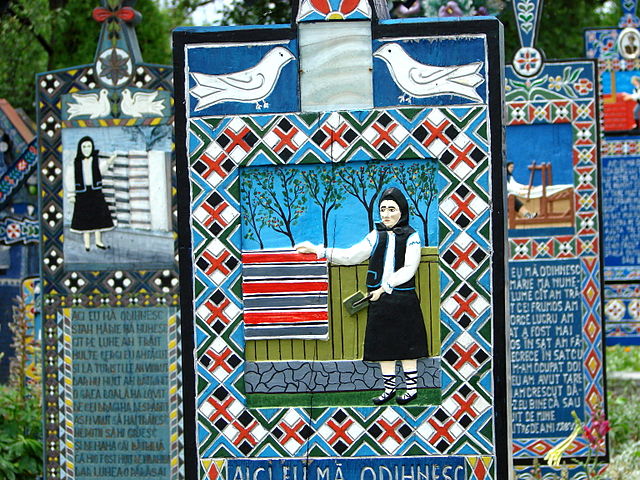
The “Merry Cemetery” Sapanta, Romania. Image credit: “Merry Cemetery – Sapanta – Romania 01”, by Adam Jones (Adam63). Wikimedia Commons image at- http://commons.wikimedia.org/wiki/File:Merry_Cemetery_-_Sapanta_-_Romania_01.jpg#mediaviewer/File:Merry_Cemetery_-_Sapanta_-_Romania_01.jpg.
A gravestone creator in a small town in Romania took his mission seriously to memorialize the dead. But he did in, er, “living color,” so to speak. With plenty of colorful images and even dirty little secrets and gossip carved onto tombstones of the local residents at the “Merry Cemetery.”
As reported in the New York Daily News, the woodcarver responsible for over 1000 gravestones in the “Merry Cemetery” would wander through town, taking notes on people’s quirks and secrets. Some flaws–drinking and carousing among them–are memorialized colorfully on their tombstones. On other stones, you’ll find his sad laments for the untimely passing of a child or the death of an adult by a sad accident.
“There’s no point in hiding secrets in this small town in Maramures, so people’s lives are captured honestly in their epitaphs,” reports the article.
The woodcarver was Stan Ion Patras, who lived from 1908-1977. Conscious of the legacy he was leaving–and perhaps anxious to tell his own story rather than have someone else do it–Patras carved his own tombstone before he passed away. He trained his replacement, who continues to add to the brightly colored crosses.
Here’s another detail I thought was neat: Patras’ folk art was highly symbolic. According to a New York Times article on the cemetery, “The portrait of the deceased is central, surrounded by geometric designs in symbolic colors: yellow for fertility, red for passion, green for life, black for untimely death. The color scheme is keyed to the subject’s life — if, for example, the deceased had many children, yellow carries the design. Some crosses are crowned with white doves representing the soul; a black bird implies a tragic or suspicious end. The background is always blue, the color of hope and freedom.”
What’s the most fascinating cemetery you’ve ever visited? What’s the most memorable epitaph you’ve ever found? Share it on our Genealogy Gems Facebook page!
by Lisa Cooke | Dec 15, 2014 | 01 What's New, African-American, Genealogy TV, Jewish
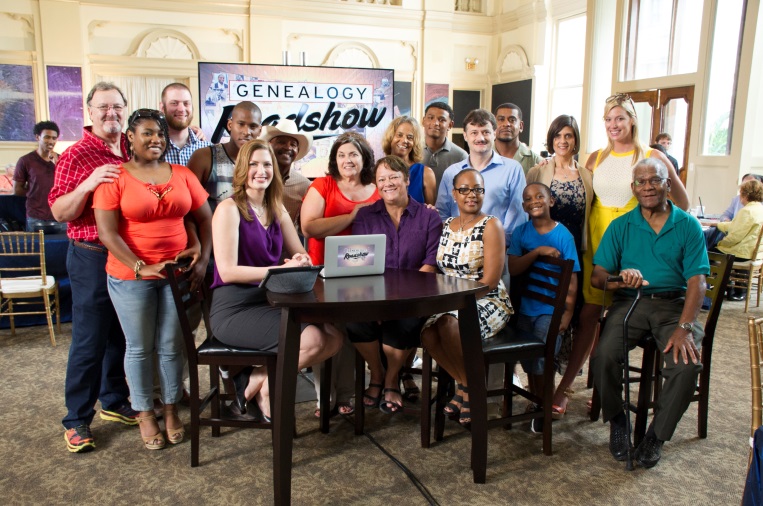
PBS’ Genealogy Roadshow Season 2 (USA) serves up pirate stories, heroes of the Holocaust and more–all in the context of tracking down everyday people’s family history! The season premieres Tuesday, January 13, 2015, at 8:00 p.m. ET and airs every Tuesday through February 24 (check local listings).
“Part detective story, part emotional journey, Genealogy Roadshow combines history and science to uncover fascinating stories of diverse Americans in and around St. Louis, Philadelphia and New Orleans,” says a PBS press release. “Each individual’s story links to a larger community (and in some cases, national) history, to become part of America’s rich cultural tapestry.”
The show’s new host is Mary Tedesco, a professional Italian genealogist whom you’ll get to meet in the upcoming January episode of The Genealogy Gems Podcast! Tune in here for more with Mary Tedesco and Genealogy Roadshow.
Here’s more from PBS on what Season 2 has in store: “Genealogy Roadshow stars genealogists Kenyatta D. Berry, Joshua Taylor and Mary Tedesco and features participants with unique claims and storylines, including a woman seeking to find out if she is descended from the infamous pirate Blackbeard; a pair of sisters exploring connections to a survivor of the legendary Donner party; a man hoping to recover essential family history that washed away in Hurricane Katrina; and a man learns that the event that drove his family to the City of Brotherly Love changed the course of history.
Over the course of the series, Berry, Taylor and Tedesco work with participants’ anecdotal clues, documents and family heirlooms to unite them with histories and people they never knew existed, as well as to reveal surprising turns and incredible histories….St. Louis, Philadelphia and New Orleans were chosen as representative of America’s fascinating crossroads of culture, diversity, industry and history, as well as for their deep pools of riveting stories. Genealogy Roadshow’s hosts and experts add color and context to the investigations, ensuring every artifact and every name becomes part of solving the mystery.”
Below are descriptions for all six episodes:
New Orleans – January 13, 2015 at 8:00 p.m.
A team of genealogists uncovers fascinating family stories at the famous Cabildo, home of the Louisiana State Museum. A couple whose ancestors hail from the same small Italian town explore the chance they may be related; a woman is desperate to find out who committed a gruesome murder in her ancestor’s past; a home held by one family for more than a century renders a fascinating story; and a woman discovers the difficult journey her ancestor took on the path to freedom from slavery.
St. Louis – January 20, 2015 at 8:00 p.m.
At Saint Louis’ historic central library, a team of genealogists uncovers fascinating family stories from Missouri’s famous gateway city. A mystery writer discovers her mother has hidden a life-changing secret; a woman finds out if she is descended from the infamous pirate Blackbeard; a mother and daughter seek connections to a famous author; and a young man seeks connection to the Mali tribe in Africa.
Philadelphia – January 27, 2015 at 8:00 p.m.
At Philadelphia’s Franklin Institute, a team of genealogists uncovers fascinating family histories. A man learns that the event that drove his family to the City of Brotherly Love changed the course of history; a man may be a Viking descendant; another’s family could have part of one of history’s biggest scams; a young man hopes to confirm his relation to a signer of the Declaration of Independence; and two sisters learn their ancestors were part of the great Irish migration.
New Orleans – February 3, 2015 at 8:00 p.m.
A team of genealogists uncovers fascinating family stories at the New Orleans Board of Trade. A local man seeks to recover essential history washed away in Hurricane Katrina; a woman discovers she has links to both sides of the Civil War; another unravels the mystery behind her grandfather’s adoption; and one man explores a link to the famous New Orleans Voodoo Queen, Marie Laveau.
St. Louis – February 10, 2015 at 8:00 p.m.
At St. Louis’ historic Union Station, a team of genealogists uncovers fascinating family stories from Missouri. A musician hopes to find connections to a famous St. Louis jazz composer; two sisters explore links to a survivor of the legendary Donner party; an Italian-American woman finds out if she is related to Italian royalty; and a schoolteacher who has all the answers for her students has very few about her own past.
Philadelphia – February 17, 2015 at 8:00 p.m.
A team of genealogists uncovers fascinating family histories at the Historical Society of Pennsylvania. One woman’s ancestor may have sparked historic labor laws; a pastor may have an outlaw in her family tree; a woman learns about slave genealogy and, with the help of DNA testing, gets the answer she has waited for; and another woman learns her ancestor may have helped others escape the Holocaust.
Tell us what you think of the episodes on our Facebook page!
by Lisa Cooke | Dec 14, 2014 | 01 What's New, Evernote, Smartphones, Source Citation, Technology
So many of you are harnessing the organizing and storage power of Evernote for family history research (and probably everything else you know!). 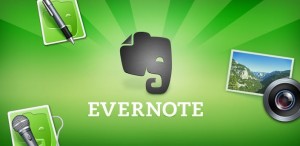 Every time I teach on Evernote, a round of excited follow-up questions follows. Here are two great questions from Karen:
Every time I teach on Evernote, a round of excited follow-up questions follows. Here are two great questions from Karen:
Q: The handwriting app on my phone is way cool, yet Evernote doesn’t seem to recognize any of the words. I thought it would apply OCR to the handwriting. Is that just a premium feature?
A: The key to handwriting OCR is to print clearly. OCR can not read cursive. Also, if you created your handwritten note and then immediately tried to search for a keyword, (and the note was printed clearly) it may not have found it because you searched before it had a chance to sync through the cloud and apply OCR. If you’re in a hurry, click the SYNC button in Evernote. Also, Premium accounts sync and apply OCR faster than free ones.
Q: My husband has a single note file that he has been putting all his daily notes in for years – currently about 14mb. Once he has uploaded that file, then when he makes additional notes to it each day, will he be “charged” for the entire file being saved again or just the incremental portion?
A: No he won’t be using 14 mb of upload each time he saves it. The key here is “upload.” You are charged uploading for the first time you upload the item to Evernote. I believe that if he adds a paragraph that is 1kb of text to the note the next day, he will only have 1kb deducted from his monthly upload.
One word of caution, if he has a desire to some day publish a book or some other project with his daily notes, I wouldn’t recommend Evernote. As you saw, the export file types are limited, and it does not export directly to Word or .txt. However, if he just wants it for his one record keeping, I think Evernote is a great solution.
Resources
 How to Get Started in Evernote, and the Ultimate Evernote Education
How to Get Started in Evernote, and the Ultimate Evernote Education
Evernote for Genealogists quick reference guide (for both Mac and Windows users: purchase the one that goes with your computer’s operating system, not your mobile device
Genealogy Gems Premium members can also access exclusive full-length videos on how to use Evernote for family history, like:
by Lisa Cooke | Dec 12, 2014 | 01 What's New, Beginner, Evernote, Source Citation
 Recently Karen wrote in to say, “I’m taking the Evernote challenge!” (Good for you!) She has this question about using the web clipper when using Evernote for family history:
Recently Karen wrote in to say, “I’m taking the Evernote challenge!” (Good for you!) She has this question about using the web clipper when using Evernote for family history:
Q: How do I get a clip out of Evernote and into my regular file system on my hard drive? I’ve tried the export feature, but it it only gives me a choice of exporting as a .enex or .mht or .html file. I don’t see a way of saving it as a pdf, docx, rtf, xls or jpg.
A: There are multiple options for saving a web clipping. I’m giving you an image for each, so scroll down to see:
1. Right-click on the clipping in your search results list (the center column) and select “Save Attachment.” Select the folder on your hard drive where you want to save it and click OK. The clipping will be saved as a .PNG image file. (.PNG is a “lossless” image file which means it’s not compressed the way a .JPG is. It will be a higher quality and larger image file than a .JPG but still commonly supported by most software programs and photo editors.
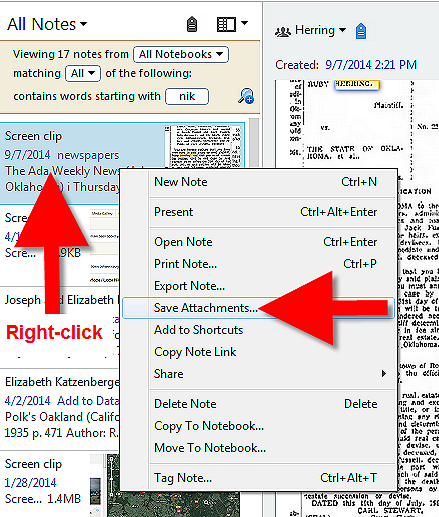
2. Pull up an individual note in the right hand pane of your dashboard, and right-click on it. Select “SAVE AS” and save the .PNG file to your hard drive.
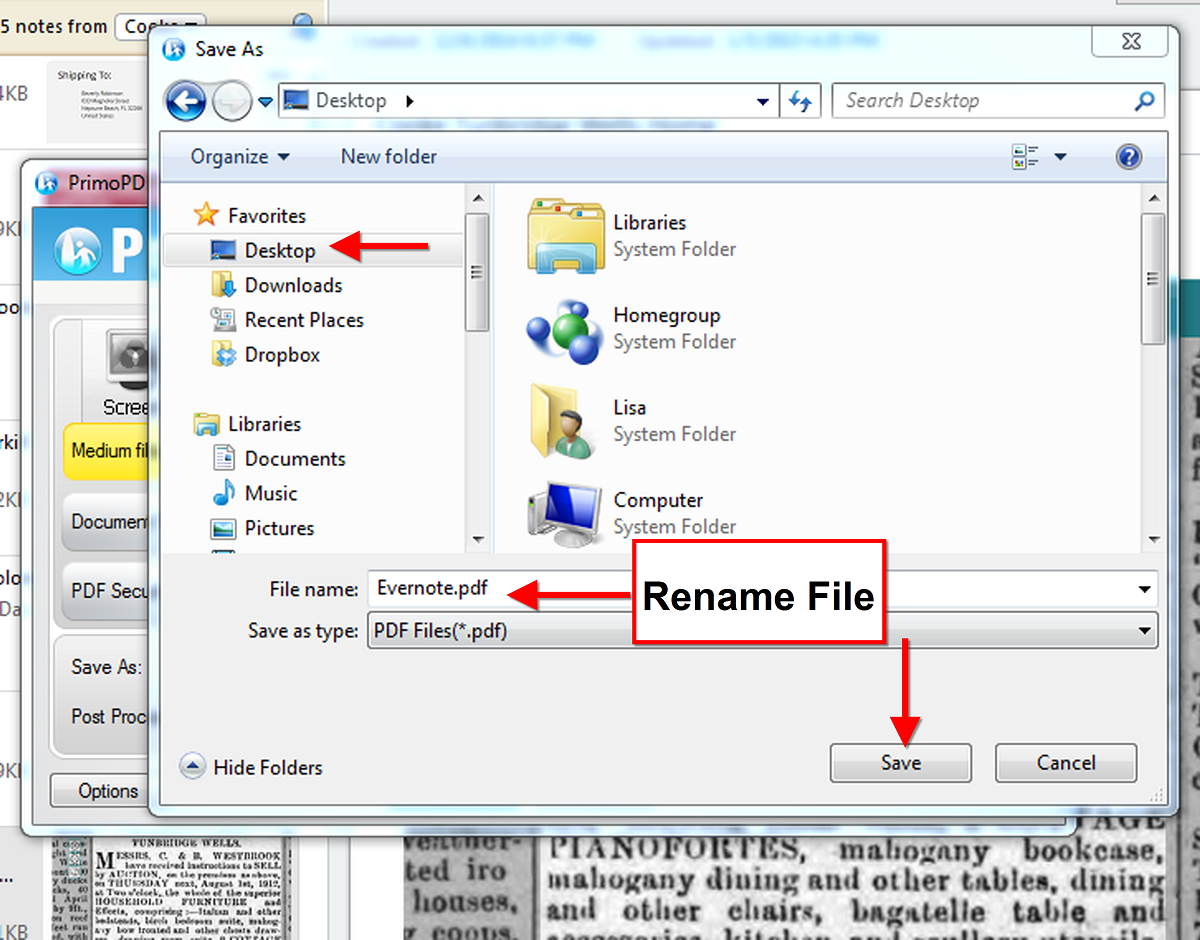
3. For non-image (clippings, photos, etc) notes such as text notes, you would have to export as XML and then convert that to .docx which is not the simplest transaction. If it was just a single note, the simplest solution is to highlight the text, copy and paste into Word.
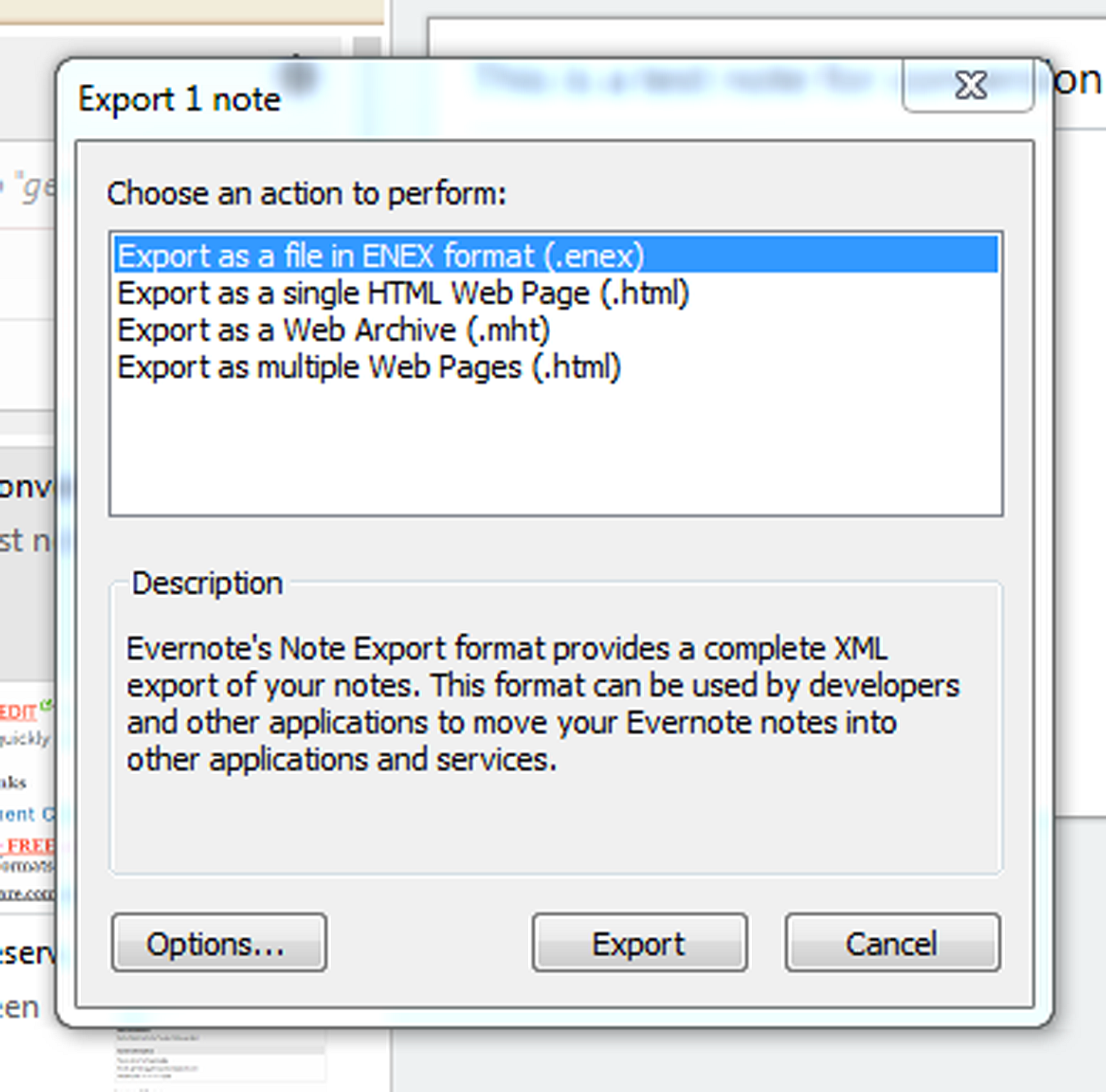
Resources
How to Get Started in Evernote, and the Ultimate Evernote Education
Genealogy Gems Premium Evernote videos like: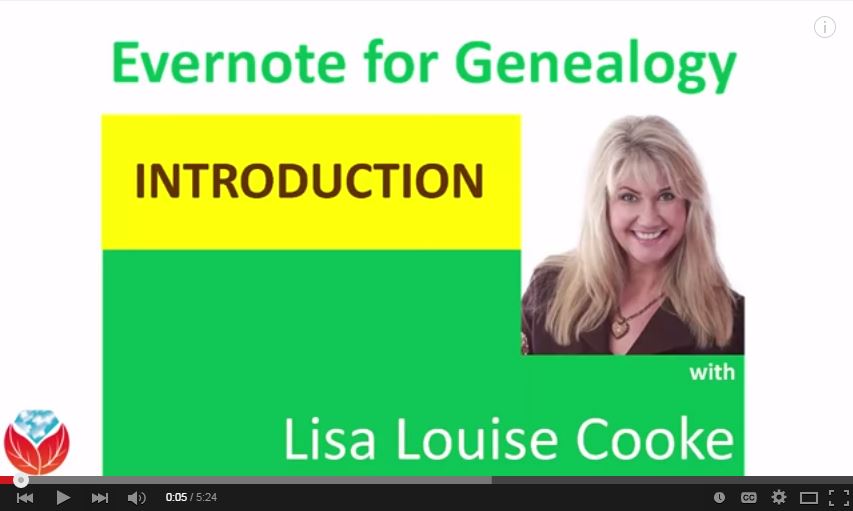
Not a Premium member yet? The Evernote video series alone makes Premium membership worth the low annual fee, but you get SO much more! Learn more here.
 campaign successfully ends today: over £600,000 has been raised in less than a month!
campaign successfully ends today: over £600,000 has been raised in less than a month!


 Every time I teach on Evernote, a round of excited follow-up questions follows. Here are two great questions from Karen:
Every time I teach on Evernote, a round of excited follow-up questions follows. Here are two great questions from Karen:








